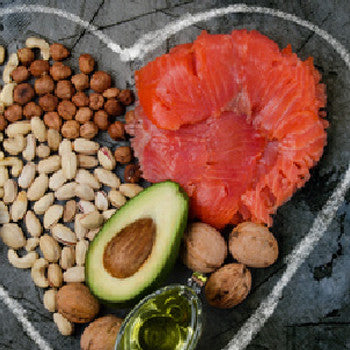LifeSense Wellness Blog

Ketone Body Metabolism in Normal Aging and Alzh...
We are excited to continue our MCT Technical Series. In this issue, we focus on Ketone Body Metabolism in Normal Aging and Alzheimer's disease. Background: The brain is the...
Ketone Body Metabolism in Normal Aging and Alzh...
We are excited to continue our MCT Technical Series. In this issue, we focus on Ketone Body Metabolism in Normal Aging and Alzheimer's disease. Background: The brain is the...

Sports Performance
It's time for our science newsflash where we bring summaries of the latest in clinical trials.In this post, we focus on Sports Performance. Even if you are not rigorously into...
Sports Performance
It's time for our science newsflash where we bring summaries of the latest in clinical trials.In this post, we focus on Sports Performance. Even if you are not rigorously into...

Weight Management - Follow Up on our Discussion...
Follow up on our discussion on the benefits of consuming C8 KetoMCT oil for Weight Management Background: As noted in our primer, two large “meta analyses” (combining data from numerous...
Weight Management - Follow Up on our Discussion...
Follow up on our discussion on the benefits of consuming C8 KetoMCT oil for Weight Management Background: As noted in our primer, two large “meta analyses” (combining data from numerous...

Does Fat Make You Fat?
Does fat make you fat? Find out from KetoMCT’s very own, renowned lipid biochemist, nutritionist, MCT expert, Dr. Alvin Berger (MS, Ph. D, Professor, Co-Founder) who was recently interviewed by...
Does Fat Make You Fat?
Does fat make you fat? Find out from KetoMCT’s very own, renowned lipid biochemist, nutritionist, MCT expert, Dr. Alvin Berger (MS, Ph. D, Professor, Co-Founder) who was recently interviewed by...

Functional benefits of MCTs: a primer
Sports To date, ketogenic high fat-low carbohydrate diets have been found to be most beneficial for endurance athletes such as long distance runners (see books and scientific articles by Jeff...
Functional benefits of MCTs: a primer
Sports To date, ketogenic high fat-low carbohydrate diets have been found to be most beneficial for endurance athletes such as long distance runners (see books and scientific articles by Jeff...

Functional benefits of MCTs: a primer
Weight Management Two large “meta analyses” (combining data from numerous individual studies) have confirmed that intake of MCTs result in a reduction of body weight and body fat, with no...
Functional benefits of MCTs: a primer
Weight Management Two large “meta analyses” (combining data from numerous individual studies) have confirmed that intake of MCTs result in a reduction of body weight and body fat, with no...
